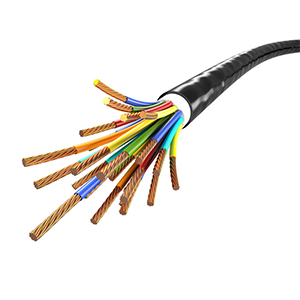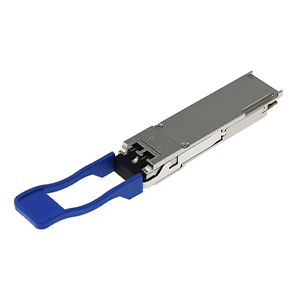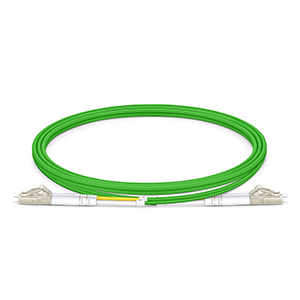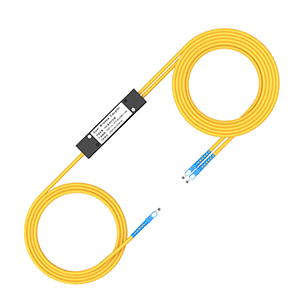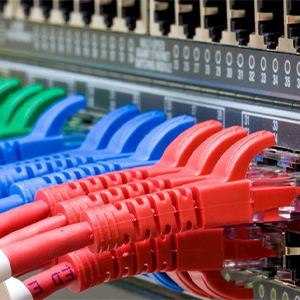In the field of modern high-speed data transmission, AOC cable, as an innovative transmission medium, has received widespread attention for its advantages such as high bandwidth, low latency and easy installation. This article will introduce the definition, structure and working principle of AOC cable, discuss its advantages over traditional copper cables and optical fibers, and delve into its application in data centers and other fields. We will also introduce the transmission performance of AOC cable, comparison with other transmission media, deployment and usage precautions, and look forward to the future development trend of AOC cable.
AOC cable introduction
Definition and characteristics:
AOC (Active Optical Cable) cable is a high-speed data transmission cable that integrates photoelectric converters and optical fiber transmission media. It realizes the transmission of optical signals and the conversion of electrical signals by integrating photoelectric converters directly into the cable, thereby providing a reliable solution in long-distance and high-speed data transmission.
AOC cable has the following characteristics:
- High-speed transmission: AOC cable supports high-speed data transmission, such as 10Gbps, 40Gbps, and 100Gbps, etc., meeting the high-bandwidth needs of modern data centers, computer networks, and high-performance computing.
- Long-distance transmission: AOC cable can transmit optical signals over a longer distance, usually reaching a transmission distance of hundreds of meters or more.
- Lightweight and soft: Compared with traditional copper cables and fiber optic cables, AOC cables are lighter and softer, making them easier to install and wire.
- Low power consumption: AOC cable uses photoelectric converters and optical fiber transmission, which can achieve lower power consumption, save energy and reduce heat generation.
- Strong anti-interference ability: Due to the transmission method of optical signals, AOC cables have strong anti-interference ability against electromagnetic interference and radio frequency interference, ensuring the stability and reliability of data transmission.
- Hot-swappable function: AOC cables usually support hot-swappable function, which can be plugged, unplugged and replaced during operation to facilitate maintenance and upgrades.
Structure and working principle:
AOC cables typically consist of the following components:
- Optical Module: The optical module is a key component in the AOC cable, including photoelectric converters and related drive circuits. It is responsible for converting electrical signals into optical signals and transmitting the optical signals into optical fibers.
- Optical Fiber: As the transmission medium of AOC cable, optical fiber is responsible for transmitting optical signals. Optical fibers usually use single-mode optical fiber or multi-mode optical fiber, which have high optical transmission efficiency and anti-interference performance.
- Cable housing: Cable housing is used to protect optical modules and optical fibers, providing physical support and protection while reducing interference to optical signals.
The working principle of AOC cable is as follows:
- Electrical signal conversion: The optical module of the AOC cable converts the input electrical signal into an optical signal. This usually involves the modulation of electrical signals and the electro-optical conversion process.
- Optical signal transmission: The converted optical signal is transmitted through optical fiber. Optical fibers have high optical transmission efficiency and can transmit signals through total internal reflection of light inside the optical fiber.
- Optical signal reception: After the optical signal reaches the destination, it goes through the photoelectric conversion process of the optical module to convert the optical signal into an electrical signal.
- Electrical signal processing: The electrical signal after photoelectric conversion can be further processed, decoded and transmitted to the target device.
Generally speaking, AOC cables realize the transmission of optical signals and conversion of electrical signals by directly integrating photoelectric converters into the cables. They provide the advantages of high speed, long distance, low power consumption and anti-interference, and are suitable for various applications with high requirements. Application scenarios for bandwidth and reliable data transmission.
AOC cable advantages and application fields
Advantage:
Compared with traditional copper cables and fiber optic cables, AOC cables have the following advantages:
-
High bandwidth: AOC cable supports high-speed data transmission, such as 10Gbps, 40Gbps, and 100Gbps, etc., meeting the high bandwidth needs of modern data centers, computer networks, and high-performance computing.
-
Low latency: AOC cables avoid delays in the transmission of electrical signals in copper cables and achieve lower latency by directly transmitting optical signals. This is important in applications that require real-time data transfer and low-latency response, such as financial transactions, online gaming, and video conferencing.
-
Easy to install: Compared with traditional copper cables and fiber optic cables, AOC cables are lighter, softer and easier to install. It does not require additional fiber optic terminal equipment and debugging processes, reducing the complexity and time cost of installation and maintenance.
-
Anti-interference: AOC cable uses optical signal transmission, has strong anti-electromagnetic interference and radio frequency interference capabilities, and can maintain stable signal transmission quality in complex electromagnetic environments.
-
High-density wiring: Due to the flexibility and lightness of AOC cable, it is suitable for high-density wiring environments, making more efficient use of limited space and simplifying wiring management.
Data center applications:
AOC cables are widely used in data centers and supercomputers, including:
-
High-speed interconnection: High-speed interconnection is required between servers, storage devices, and network devices in data centers to meet the needs for large-scale data transmission and processing. AOC cables can provide high-bandwidth and low-latency connections to meet the high-speed interconnection needs of data centers.
-
Supercomputers: Supercomputers usually need to handle large-scale scientific computing and data analysis tasks, and have high requirements for high performance and high-bandwidth data transmission. AOC cables provide high-speed, reliable connections to support data transmission within and outside supercomputers.
-
Virtualized environment: In a virtualized environment, a large number of virtual machines require fast data transmission and communication. AOC cables can provide high-bandwidth and low-latency connections to meet the data transmission needs in virtualized environments.
-
High-performance storage: The high-performance storage system in the data center needs to support the rapid reading, writing and transmission of large-scale data. AOC cables provide high-bandwidth and low-latency connections that can meet the data transmission requirements of high-performance storage systems.
In summary, AOC cables are widely used in application fields such as data centers, supercomputers, and high-density cabling environments due to their advantages such as high bandwidth, low latency, easy installation, and anti-interference. It provides high-speed, stable and reliable data transmission solutions for these fields.
Introduction to the transmission performance of AOC cable
Transmission distance:
AOC cables generally support different transmission distances, depending on the specifications and design of the AOC cable. Generally speaking, AOC cables can achieve transmission distances of tens to hundreds of meters or even longer.
For short-distance transmission, such as connections within a data center or between cabinets, AOC cables can typically support transmission distances of 10 to 30 meters.
For medium-distance transmission, such as connections between computer rooms or floors, AOC cables can usually support transmission distances of 50 meters to 100 meters.
For long-distance transmission, such as connections across floors or across buildings, AOC cables can often support transmission distances of hundreds of meters or more. Some high-end AOC cables can even support transmission distances of kilometers.
Transmission rate:
AOC cables exhibit different performance at different transmission rates.
For 10Gbps transmission rate, AOC cables usually adopt 10GBASE-SR (fiber optic interface) or 10GBASE-CR (copper cable interface) standard to support 10Gbps high-speed data transmission. Under appropriate transmission distance, AOC cable can provide stable 10Gbps transmission performance.
For 40Gbps transmission rate, AOC cable usually adopts 40GBASE-SR4 or 40GBASE-CR4 standard to support 40Gbps high-speed data transmission. AOC cables can provide stable 40Gbps transmission performance at appropriate transmission distances.
For 100Gbps transmission rate, AOC cable usually adopts 100GBASE-SR4 or 100GBASE-CR4 standard to support 100Gbps high-speed data transmission. AOC cables can provide stable 100Gbps transmission performance at appropriate transmission distances.
It should be noted that the specific transmission distance and transmission rate depend on the specifications of the AOC cable and the manufacturer’s specifications. When selecting and using AOC cables, confirm the specific application requirements and the manufacturer’s specification sheet.
In summary, AOC cables can support different transmission distances, from tens of meters to hundreds of meters or even further. At different transmission rates, such as 10Gbps, 40Gbps and 100Gbps, AOC cables can provide stable transmission performance and meet the needs of high-speed data transmission.
Comparison of AOC cable and other transmission media
Compare with copper cable:
Compared with traditional copper cables, AOC cables have some differences in performance and application.
-
Transmission performance: AOC cable has advantages in high bandwidth and low latency. In comparison, copper cables typically have lower transmission bandwidth and latency. AOC cables are suitable for applications that require high-speed data transmission and low-latency response.
-
Transmission distance: AOC cable usually supports longer transmission distance. Copper cables face signal attenuation and interference problems when transmitting at high speeds, so their transmission distances are relatively short. The AOC cable transmits signals through optical fiber, which can achieve longer transmission distances.
-
Flexibility and easy installation: AOC cable has high flexibility and easy installation due to its combination of optical fiber and cable design. In comparison, copper cables are typically rigid and bulky, and the installation and cabling process is relatively complex.
-
Anti-interference: AOC cable transmits signals through optical fiber and has strong anti-electromagnetic interference and radio frequency interference capabilities. Copper cables are susceptible to electromagnetic interference during long-distance transmission, which may lead to a decrease in signal quality.
Compare with optical fiber:
There are some differences between AOC cable and traditional optical fiber in terms of cost, installation and maintenance.
-
Cost: The manufacturing and installation costs of traditional optical fibers are high, including optical fiber materials and connectors. In comparison, AOC cable may cost less within a certain transmission distance range because it integrates optical modules and optical fibers, reducing the complexity of installation and configuration.
-
Installation and maintenance: The installation and maintenance of traditional optical fiber requires the participation of professional technicians, and requires precise optical fiber connection and debugging. In contrast, AOC cable has a simpler installation process and does not require additional fiber optic terminal equipment and debugging processes, reducing the complexity and time cost of installation and maintenance.
-
Transmission performance: Traditional optical fiber and AOC cable can reach similar levels in terms of transmission performance, such as high bandwidth and low latency. However, the specific transmission performance also depends on the specifications and manufacturers of the optical module and fiber.
The appropriate transmission medium needs to be selected based on specific application requirements and scenarios. AOC cables are suitable for applications that require high bandwidth, low latency and easy installation, while copper cables and optical fibers are suitable for other different application scenarios.
Precautions for deployment and use of AOC cables
Installation and connection:
When installing and connecting AOC cables, you need to follow the following precautions:
-
Physical connection: Make sure the optical module and interface of the AOC cable are correctly aligned and gently insert into the slot or interface. Avoid using excessive force or bending the fiber to avoid damaging the connector or causing signal quality degradation.
-
Prevent bending and twisting: Try to avoid excessive bending and twisting of AOC cables. Excessive bending may cause fiber damage or signal attenuation. When routing, make sure the fiber bend radius meets the manufacturer’s recommendations.
-
Environmental protection: When installing AOC cables, pay attention to avoid exposing them to harsh environments such as excessively high or low temperature, humidity or dust. Ensure that the working environment of the AOC cable meets the manufacturer’s specifications.
-
Ensure compatibility: Before connecting the AOC cable, make sure it is compatible with the target device. Check the device’s specification sheet for information such as its supported optical module types and transmission rates to ensure AOC cable compatibility.
-
Safe operation: When installing and connecting AOC cables, be sure to disconnect the power supply and follow safe operating procedures. Avoid applying excessive external force to the cable to avoid damaging the cable or equipment.
Environmental requirements:
When using AOC cables, you need to pay attention to the following environmental requirements and restrictions:
-
Temperature and humidity: AOC cables usually work within a certain temperature and humidity range. Ensure that the temperature and humidity of the working environment meet the manufacturer’s specifications to avoid negatively affecting the performance and reliability of the AOC cable.
-
Dust-proof and pollution-proof: The optical modules and connectors of AOC cables are sensitive to dust and pollutants. Try to avoid installing AOC cables in dusty and pollutant environments, and clean the connectors and fiber end faces regularly.
-
Electromagnetic interference: AOC cables transmit signals through optical fibers and are relatively less susceptible to electromagnetic interference. However, you should still try to avoid installing AOC cables near sources of strong electromagnetic interference to ensure stable signal transmission.
-
Proper handling and storage: AOC cables should be properly handled and stored when not in use. Avoid bending or twisting the cable to prevent damage to the optical module and connector. Also, avoid exposing cables to extremes of temperature, humidity, or pressure.
Please note that the above considerations and environmental requirements may vary depending on the specific specifications and manufacturer of the AOC cable. Before installing and using AOC cables, it is recommended to read the user manual and specifications provided by the manufacturer in detail and follow their recommendations.
Summarize:
As an innovative transmission medium, AOC cable has the advantages of high bandwidth, low latency and easy installation, and has become an important choice in the field of high-speed data transmission. It shows great potential in applications such as data centers and shows clear advantages when compared with traditional copper cables and optical fibers.
With the continuous innovation of technology and the expansion of application fields, AOC cables will continue to develop to provide strong support for the growing data needs. Whether in existing applications or in future innovative applications, AOC cables will become efficient and reliable transmission tools.


